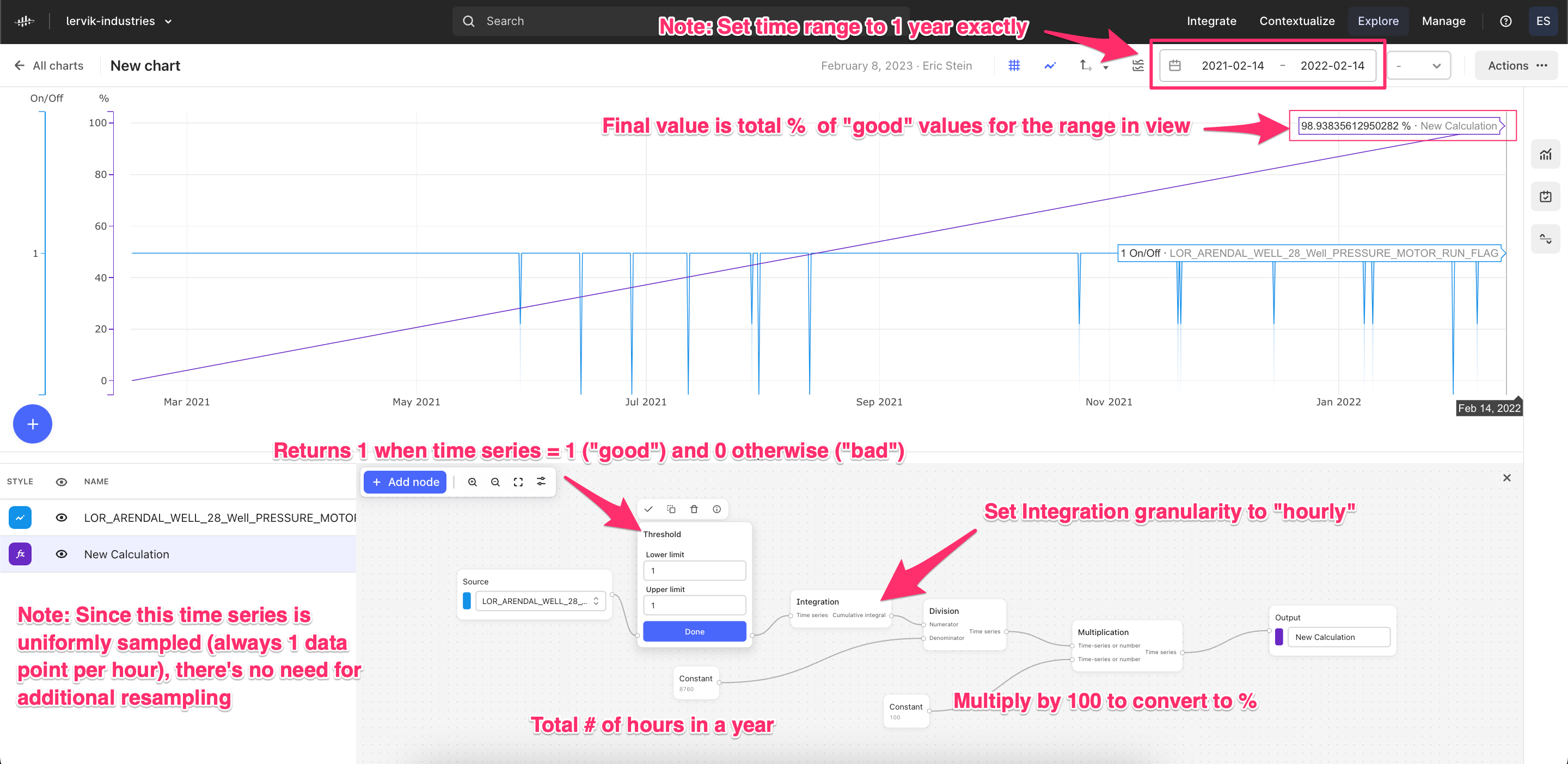@stanleychiu the same approach should still work, except instead inputing the same value (1 in my example above) in the Lower limit and Upper limit parameters of the Threshold function, you’ll simply input the range that represents the “good” values.
Therefore, whenever the sensor is within the bounds of the range you specify (i.e. Is of a “good” value), the calculation will output a value of 1, and 0 otherwise. From here, the rest of the calculation will work. Although, again, this is assuming your pressure time series is uniformly sampled (no gaps, no variation in sampling frequency).
When it comes to scaling this to more than 50 time series, this isn’t something that can be entirely done via the UI today and will require the assistance of a data scientist to solve. This can be done by leveraging our Python SDK, Cognite Functions, and InDSL to recreate the calculation – plus the flexibility of working directly in python will allow one to make the calculation more robust (e.g. Different strategies for filling gaps in the time series). Although, this is certainly a workflow we intend to support entirely from the Cognite Data Fusion UI (no coding necessary) – @Knut Vidvei would be the best person to connect with to discuss and to share more information.
In the meantime, you will need to “Duplicate” each calculation (via the … button in the More column) and/or changing the input time series accordingly. It will take some manual work to get it set up initially, but can be used anytime thereafter by changing the date range in view.


 Check the
documentation
Check the
documentation Ask the
Community
Ask the
Community Take a look
at
Academy
Take a look
at
Academy Cognite
Status
Page
Cognite
Status
Page Contact
Cognite Support
Contact
Cognite Support





